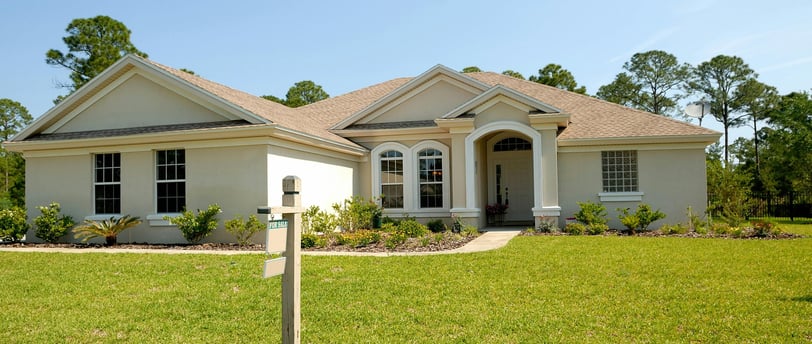History of the DSCR Loan: A Key Tool for Real Estate Investors
The Debt Service Coverage Ratio (DSCR) loan has become a cornerstone of real estate financing, particularly for investors aiming to expand their portfolios. Its origins, development, and modern applications tell a story of how financial institutions and borrowers have worked together to optimize lending based on asset performance rather than personal income.
By Quinton Schamp


The Origins of DSCR Loans
The concept of assessing debt service coverage can be traced back to the early 20th century. Financial institutions began evaluating commercial real estate loans by analyzing the income generated by the property relative to the debt obligations. This shift marked a departure from traditional underwriting, which primarily focused on the borrower's personal income and creditworthiness.
During the post-World War II economic boom, demand for real estate surged, and lenders sought more effective ways to gauge the viability of large-scale property investments. The DSCR metric emerged as a pivotal tool for underwriting commercial loans, as it quantified the property's ability to generate enough cash flow to cover its debt obligations. This approach not only reduced risk for lenders but also provided borrowers with access to financing based on the strength of their investment properties.
Evolution in the Late 20th Century
By the 1980s and 1990s, the use of DSCR had expanded beyond commercial real estate. It became a standard metric for evaluating various types of income-producing properties, including multifamily housing, retail centers, and office buildings. During this period, securitization of loans gained traction, with mortgage-backed securities (MBS) transforming the lending landscape. Investors in these securities relied heavily on DSCR as a key indicator of risk and performance.
This era also saw an increased interest in single-family rental properties as investment assets. However, most traditional lenders continued to evaluate these properties based on the borrower's personal financials, limiting opportunities for investors. The need for a loan product tailored specifically to real estate investors became increasingly apparent.
The Emergence of DSCR Loans for Real Estate Investors
The early 2000s marked a turning point. As real estate investing gained popularity, especially among individuals and small business owners, lenders began to refine loan products to meet their unique needs. DSCR loans were introduced as a solution for investors seeking financing without relying on their personal income.
Unlike traditional loans, DSCR loans focus on the property's ability to generate enough income to cover its debt obligations. This innovation allowed real estate investors to secure funding based on the projected or actual income of their rental properties, opening new doors for portfolio growth.
The Impact of the 2008 Financial Crisis
The 2008 financial crisis was a defining moment for the mortgage industry, including DSCR loans. The crisis exposed weaknesses in underwriting practices and led to tighter regulations under the Dodd-Frank Act. Lenders became more cautious, and borrowers faced increased scrutiny. Despite these challenges, DSCR loans remained a viable option for real estate investors due to their emphasis on property performance rather than borrower income.
In the years following the crisis, the rental property market experienced significant growth. As more Americans turned to renting, the demand for income-generating properties rose, further cementing the importance of DSCR loans in the real estate sector.
Modern DSCR Loans: A Tailored Solution for Investors
Today, DSCR loans are among the most popular financing options for real estate investors. They are designed to provide flexibility and ease of qualification, especially for borrowers who may not meet the stringent income requirements of traditional loans.
Key features of modern DSCR loans include:
No Personal Income Requirement: Lenders assess the property's income, making it easier for self-employed or non-W-2 borrowers to qualify.
Streamlined Process: With less emphasis on personal financials, the application process is often faster and less cumbersome.
Flexibility: DSCR loans can be used for various property types, including single-family rentals, multifamily units, and short-term rentals like Airbnb properties.
Customizable Terms: Borrowers can choose from fixed-rate or adjustable-rate options, depending on their investment strategy.
The Future of DSCR Loans
The DSCR loan market continues to evolve, driven by technology, changing investor needs, and economic trends. Automation and data analytics are enhancing underwriting processes, making it easier for lenders to assess property performance accurately. Meanwhile, the growth of alternative property investments, such as vacation rentals, has spurred the development of new DSCR loan products tailored to these niches.
As real estate investing becomes more accessible, DSCR loans will likely remain a critical tool for investors seeking to build and diversify their portfolios. By focusing on property performance, these loans empower investors to achieve their financial goals without being hindered by traditional income-based lending criteria.
Conclusion
The history of DSCR loans reflects the ongoing innovation in real estate financing. From their early use in commercial real estate to their modern applications for individual investors, DSCR loans have revolutionized the way properties are financed. For real estate investors, understanding the evolution and benefits of DSCR loans is essential for leveraging this powerful financing tool to its fullest potential.
Whether you’re a seasoned investor or just starting, DSCR loans can provide the flexibility and support needed to grow your portfolio. To learn more about how DSCR loans can work for you, visit DSCRLoan.us and take the next step in your real estate investment journey.
